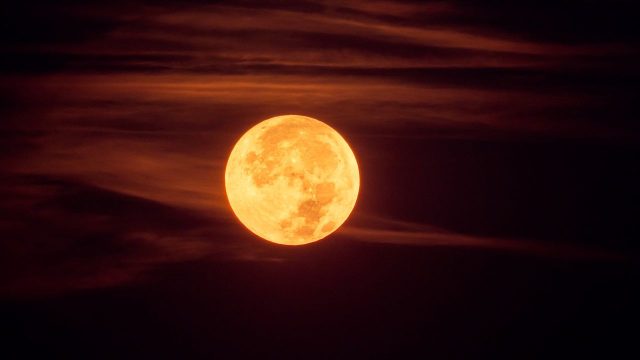
Like pipes, statues and nails, the moon can rust. Such rusting has occurred despite a seeming lack of necessary components — but all signs of blame point to the Earth. A new study posits that the relevant rust-forming particles are coming from the Earth’s atmosphere during a short period in the lunar cycle.
Building rust
Hematite, also known as rust, was first found on the moon in 2020 during India’s Chandrayaan-1 mission. The discovery puzzled scientists because rust is formed through the process of oxidation, which, like the name suggests, requires oxygen as well as water. But there is no oxygen on the moon and water is extremely limited. “It’s very puzzling,” Shuai Li, a researcher at the University of Hawaii, said to NASA in 2020. “The moon is a terrible environment for hematite to form in.” Now, new research shows the culprit may be the Earth. “Hematite can form when oxygen ions in Earth’s magnetosphere (Earth wind) are implanted into iron-bearing materials” on the moon, said a study published in the journal Geophysical Research Letters.
The Earth and the moon are usually “bathed in a stream of charged particles emanating from the sun,” said Nature. But for approximately five days out of the month-long lunar cycle, “Earth passes between the sun and the moon, blocking most of the flood of solar particles.” When this happens, the “moon is exposed mainly to particles that had been part of Earth’s atmosphere before blowing into space.” This is called Earth wind.
The Earth wind contains ions of nitrogen, hydrogen and oxygen from the planet’s atmosphere. These charged particles can “then embed themselves in the lunar soil and cause the chemical reactions required to create rust,” said The Independent. This still raises the question of where the water required for oxidation comes from. Water on the moon only really exists as ice at the poles, but researchers have come to believe that “hematite may have formed in those polar regions and later spread across the surface by some unknown process,” said Firstpost.
Varying reactions
The presence of rust on the moon is also intriguing because, while oxygen ions are needed to form hematite, hydrogen ions can undo the rust. Earth wind contains both kinds of ions. To test the effect of the hydrogen ions, researchers “irradiated hematite with both high-energy hydrogen, mimicking hydrogen found in Earth wind, and low-energy hydrogen ions, like those from the sun,” said Phys.org. They found that the “high-energy hydrogen ions are capable of reducing hematite back to metallic iron, while low-energy hydrogen ions are largely ineffective.” So, the amount of rust retained on the moon “depends on both the energy and the relative flux ratio of oxygen and hydrogen ions from Earth wind.”
These findings “provide valuable insights into the widespread distribution of lunar hematite and indicate a long-term material exchange between Earth and the moon,” said the study. While the evidence shows strong support for Earth wind as the cause of lunar rusting, lab conditions may not always fully emulate the environment of the moon. As a result, more research, preferably done on the moon itself, is needed to test the processes.
The Earth is likely to blame




